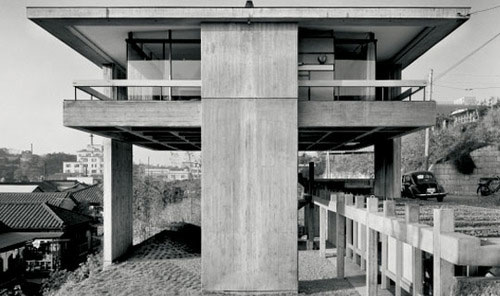
Exploring Kiyonori Kikutake’s Architectural Innovations
Introduction to Kiyonori Kikutake
Kiyonori Kikutake stands as a trailblazer in the world of architecture, renowned for his innovative designs and groundbreaking contributions to the field. His visionary approach to design has left an indelible mark on the architectural landscape, inspiring generations of architects and reshaping our understanding of space and form.
Early Influences and Education
Born in 1928 in Kurume, Japan, Kikutake’s passion for architecture was ignited at a young age. He studied architecture at the University of Tokyo, where he was influenced by the teachings of Kenzo Tange, another iconic figure in Japanese architecture. Tange’s emphasis on modernism and urban planning deeply resonated with Kikutake, laying the foundation for his future work.
Emergence of Metabolism Movement
Kikutake played a pivotal role in the emergence of the Metabolism movement, a post-war architectural movement in Japan that sought to address the rapid urbanization and technological advancements of the time. As one of the founding members of the movement, Kikutake advocated for a flexible and adaptable approach to architecture, envisioning buildings and cities as living organisms that could evolve and grow over time.
Visionary Projects
Throughout his career, Kikutake’s designs pushed the boundaries of conventional architecture, embracing futuristic concepts and experimental forms. One of his most famous projects is the Sky House (1958), a residential structure that features a floating roof supported by a single central pillar. This pioneering design challenged traditional notions of space and structure, earning Kikutake international acclaim.
Marine City and Aquapolis
In the 1960s, Kikutake proposed ambitious projects that reflected his vision of the future of urban living. The Marine City concept envisioned a network of interconnected floating cities, designed to accommodate population growth and mitigate the impact of rising sea levels. Similarly, the Aquapolis project imagined a self-sustaining floating city that could harness renewable energy and support a thriving community.
Legacy and Influence
Kiyonori Kikutake’s legacy extends far beyond his built works, encompassing his role as an educator and mentor to future generations of architects. His ideas continue to inspire architects around the world, shaping the discourse on sustainable design, urban planning, and the future of architecture. Kikutake’s innovative spirit and commitment to pushing the boundaries of architectural possibility ensure that his influence will endure for years to come.
Conclusion
In conclusion, Kiyonori Kikutake’s innovative designs and visionary approach to architecture have left an indelible mark on the architectural landscape. From his early experiments with Metabolism to his futuristic visions of floating cities, Kikutake’s work continues to inspire and captivate architects and enthusiasts alike. His legacy serves as a testament to the power of imagination and the transformative potential of architecture to shape the world we inhabit. Read more about kiyonori kikutake
